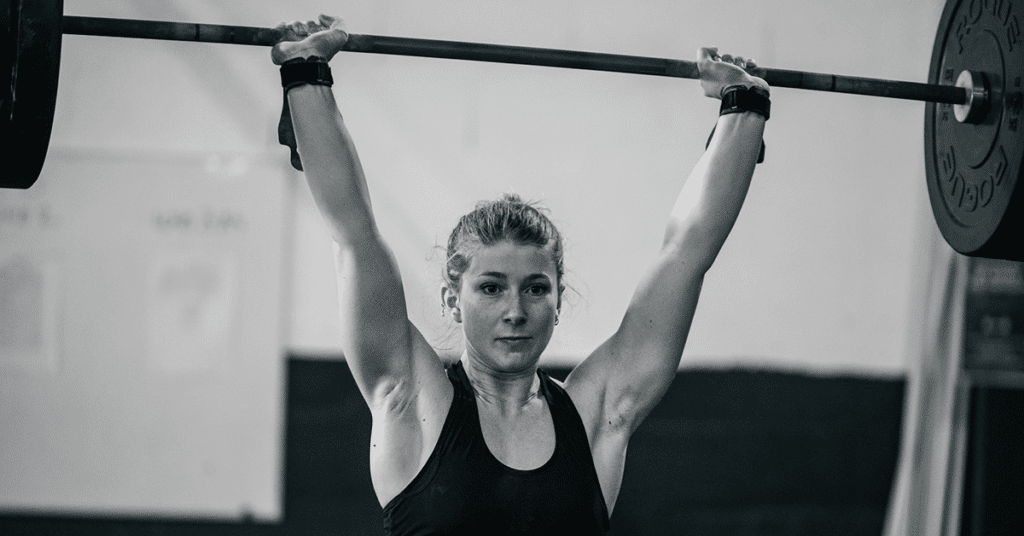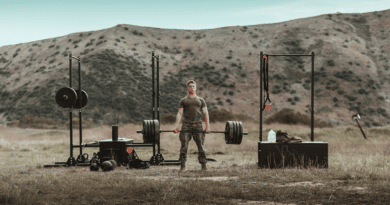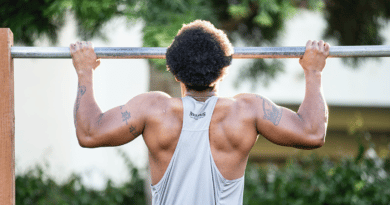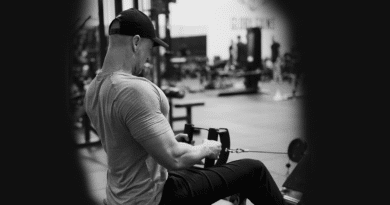Behind the Neck Press Best Guide – Benefits, Muscles Worked and Technique Tips
Welcome to the complete guide to the Behind the Neck Press exercise.
What is the Behind the Neck Press?
The Behind the Neck Press is an unusual and effective barbell pressing exercise that starts from the shoulders and ends at full extension overhead.
The exercise can be performed in standing and seated variations.
- What is the Behind the Neck Press?
- Muscles Worked by the Behind the Neck Press
- Benefits of the Behind the Neck Press
- How to do the Behind the Neck Press
- Technique Tips for the Behind the Neck Press
- Is the Behind the Neck Press Right for Me?
- Is the Behind the Neck Press Dangerous?
- Behind the Neck Press Variations
- Behind the Neck Press Alternatives
- FAQs
- Learn More
Muscles Worked by the Behind the Neck Press
The Behind the Neck Press works many muscles, including:
- Front, outer, and rear deltoids (shoulders)
- Trapezius (upper back)
- Triceps brachii (back upper arm)
- Serratus anterior (armpit over rib cage)
Additionally, the standing position will also force the core and legs to work hard to stabilise the movement.
Benefits of the Behind the Neck Press
The exercise has many excellent benefits.
Build Muscle
The Behind the Neck lift is an excellent tool for hypertrophy. It provides you with a unique way to build muscle mass for the upper body.
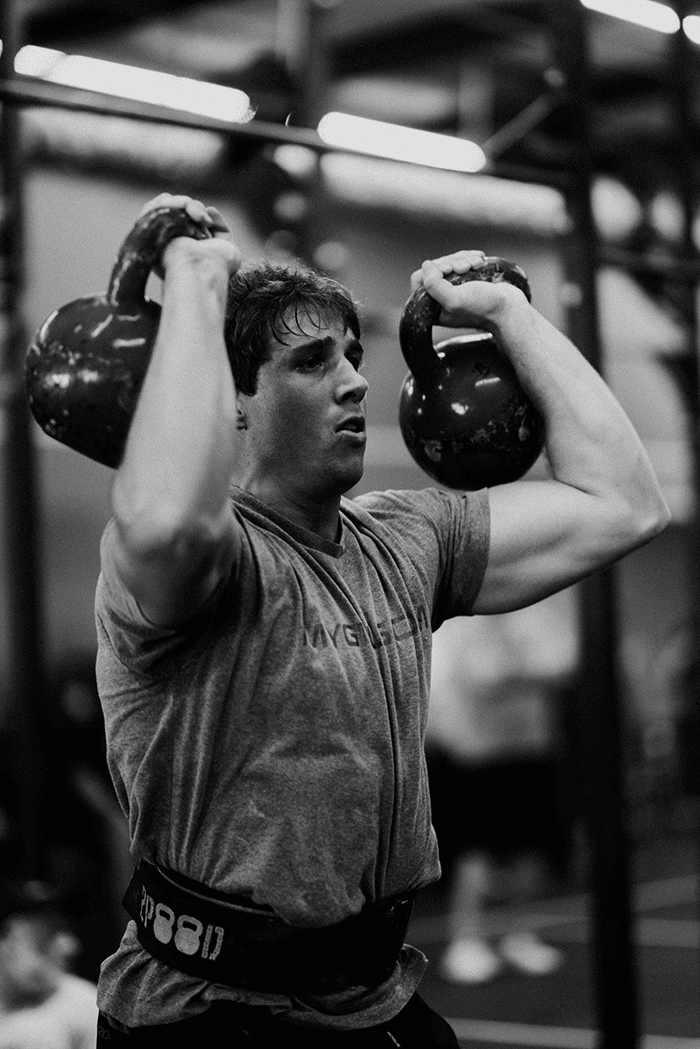
Enhance Strength
The movement will develop stronger shoulders, upper back and arms. It will make other overhead pressing exercises easier as well.
develop stronger and healthier shoulders, overhead positioning, and even upper back strength.
Stable Shoulders
As well as lifting the bar, the body must also balance and stabilise the load at all times. This increases the ability of the shoulders to control overhead weight.
More Challenging for the Deltoids
The standard Strict Press distributes the effort across the upper chest as well as the shoulders.
Pressing from behind the neck eliminates this additional force and creates more of an isolated exercise.
A New Way to Challenge the Shoulders
The Behind the Neck Press lessens the level of stress your shoulders take over time. The different pressing angle keep things fresh and challenging for the body.
Always pressing in front of the body overloads the anterior deltoids, adding pressing behind the neck alters this bias and lead to a more complete program.
How to do the Behind the Neck Press
The exercise can be performed from both a seated and standing position.
Here we will explain both variations.
Seated
This will help you to focus on the position of the barbell and stop the shoulders externally rotating.
Make sure you have a spotter.
Build the weight up gradually over time. Focus on excellent form and a controlled tempo at all times.
If you are new to the exercise a Smith Machine can be a helpful tool to help the body get used to the mechanics of the movement.
Technique
Place a bench in a squat rack. Set the backrest to vertical.
Set the support bars at a height where you can comfortably remove the barbell from a position without struggling.
- Sit on the bench and grip the barbell wider than shoulder width apart. Have the spotter assist. Fully extend the arms overhead
- Inhale and brace the core, glutes and grip
- Retract (back and down) your scapula to give your shoulders support and proper range of motion
- Slowly lower the weight to slightly above the traps
- Drive the weight back to the starting position
- Exhale
- Repeat for the desired number of reps
Standing
This variation is harder and riskier. Start with the barbell or a very light weight and take time to adjust your mind and body to the bar path and overall feel of the exercise.
Here you won’t have any back support so you must brace the core especially well. The lack of the bench makes the overall movement more unstable. Your body will pick up that slack.
The benefits of this are increased core activation and stabilisation, both elements of your fitness that will make you into a better athlete.
You can also perform this variation without a spotter.
Technique
Set a squat rack with the hooks at upper chest level.
Rack the barbell as you would for a Snatch Balance or High Bar Back Squat.
- Rack the bar, step back, then Push Press it into the overhead position. This is the starting position
- Inhale and brace the core, glutes and grip
- Retract (back and down) your scapula to give your shoulders support and proper range of motion
- Slowly lower the weight to slightly above the traps
- Drive the weight back to the starting position
- Exhale
- Repeat for the desired number of reps
Technique Tips for the Behind the Neck Press
Don’t move your head back and forwards during the upward portion of the exercise.
Operate in a controlled and focused manner at all times. Control the tempo and weight. If you don’t feel in control of the weight, make it lighter.
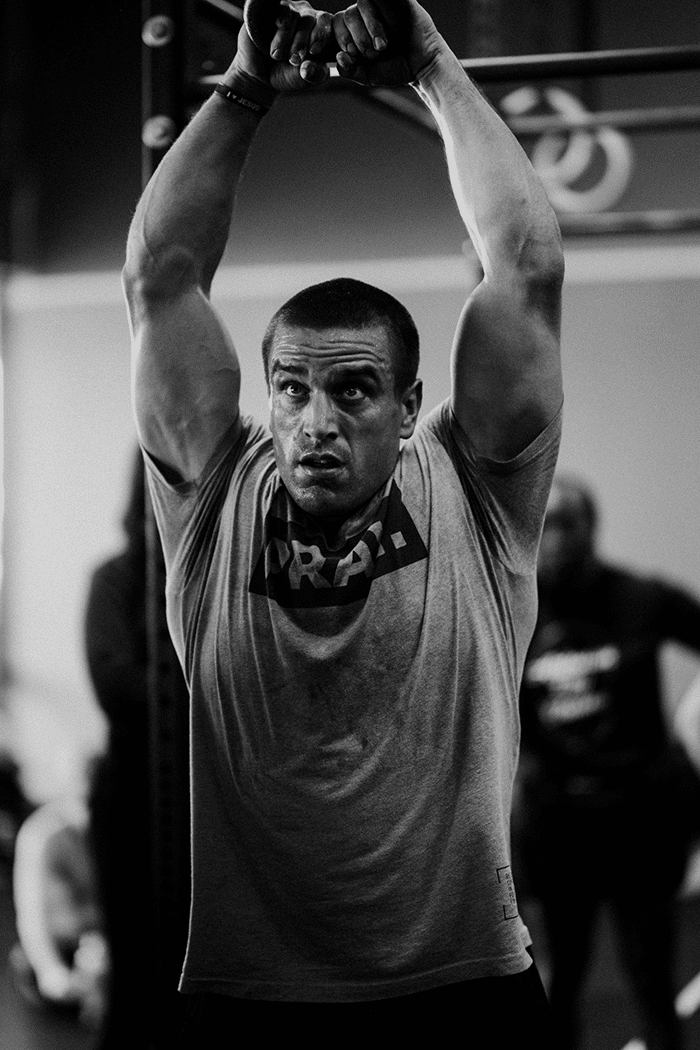
Is the Behind the Neck Press Right for Me?
With good posture, a strong overhead position and solid upper body mobility then the exercise is right for you.
If you do experience any pain or discomfort then there may be work to do on the areas mentioned above.
Consult your coach or physio if you aren’t sure and want to be individually assessed.
Is the Behind the Neck Press Dangerous?
Done properly, with great technique and a weight that is manageable for your strength, the exercise is not dangerous, despite its often-overstated reputation.
The exercise does place stress on the rotator cuff muscles (that stabilise your joints).
The position itself can also feel awkward and uncomfortable at times, but with good mobility this can be remedied.
It is pertinent to build the weight up slowly over time. This will build up the strength of the tendons and ligaments, as well as the scapular and various muscle groups that are involved with the exercise.
Think about the whether or not you have the following:
- Normal trunk stability
- The necessary shoulder mobility and stability
- Good thoracic (upper) spine mobility
Your coach or a trainer can help to assess your levels in these areas of your fitness.
Behind the Neck Press Variations
Add these variations into your training.
Behind the Neck press with Dumbbells
This is a great variation to practice for the full barbell version. It will build strength and mobility where you need it most.
It reduces the chances of injury because the dumbbells are not fixed into position. In turn, this places less stress on the shoulders.
You can work your arms further back over time and build up the necessary range of motion in a natural and organic way.
No extreme extension and abduction is required.
Strict Press
The standard Strict Press (or Overhead Press or Military Press) is an excellent compound shoulder pressing exercise.
This should always be the foundation of your shoulder training. Combined with the Behind the Neck Press you get the best of both worlds.
You will also get more of a chest pump with this variation.
Behind the Neck Press Alternatives
The following will all test and challenge similar muscle groups.
- Pike Push Ups
- Sotts Press
- Push Press
- Handstand Push Ups
- Snatch Balance
- Overhead Squats
- Dead Hangs
FAQs
Got more questions? Scroll down to find the answers.
What does the Behind the Neck Press Work?
The exercise improves the front, outer and rear deltoids (shoulders), the traps (upper back) and triceps brachii. It also develops core strength and stabilisation.
Should you Shoulder Press behind your Head?
Yes, if you have strong shoulders and good mobility then the exercise can be a valuable addition to your training. The Strict Press targets the anterior deltoids (front) to a greater degree but the two exercises combined can create great results.
What is Seated Behind the Neck Press?
This is a version of the exercise where the athlete sits on a bench in order to perform the exercise.
What is a BTN Press?
This is an acronym for the Behind the Neck Press.
Learn More
Add this incredible arm exercise into your training and learn to DB Floor Press.

